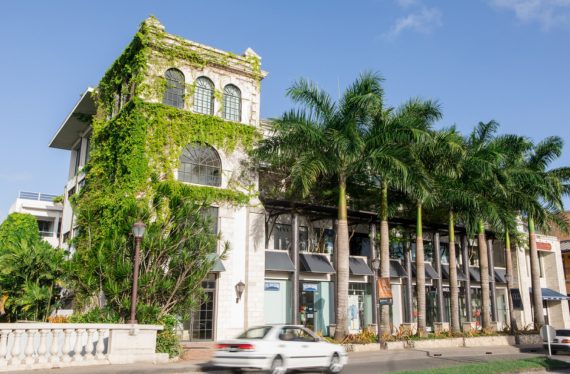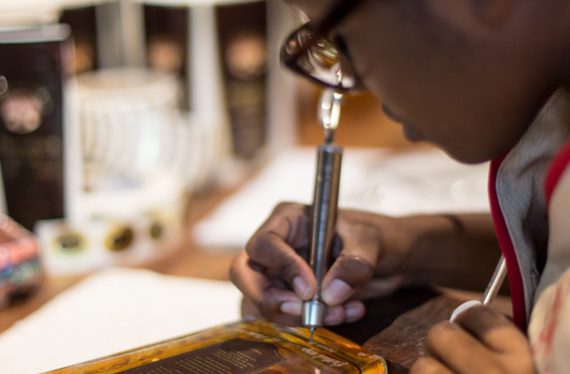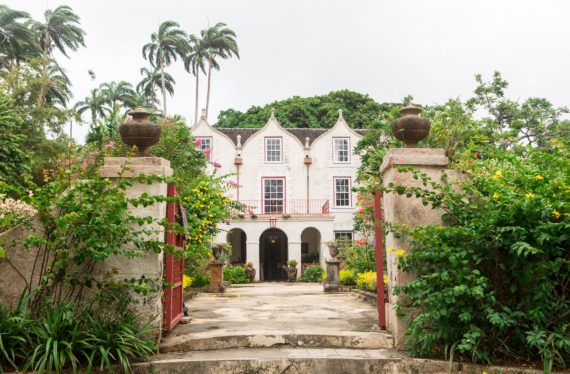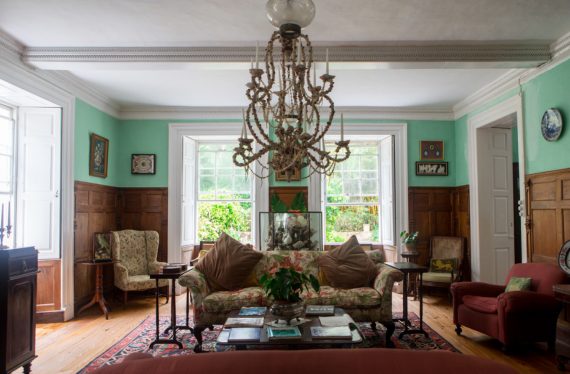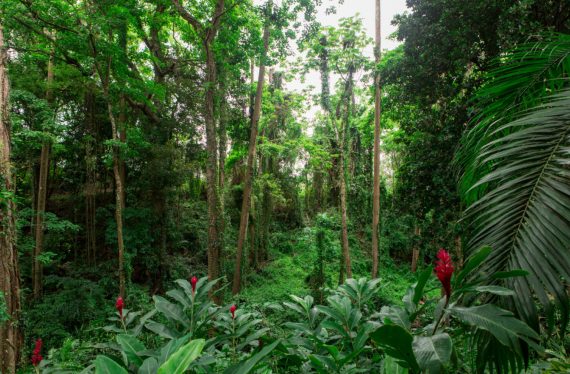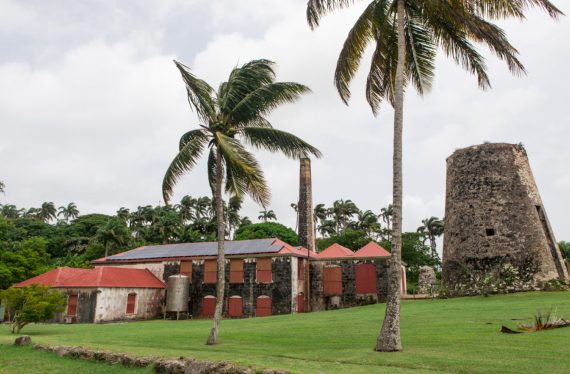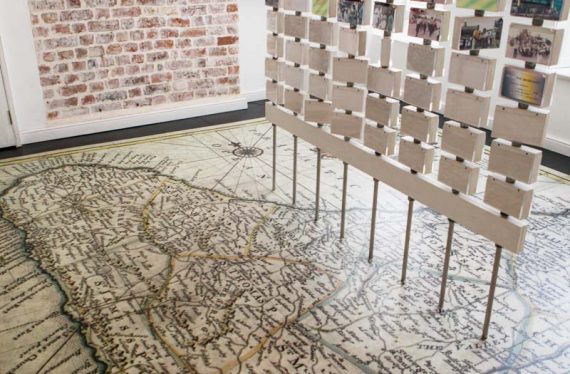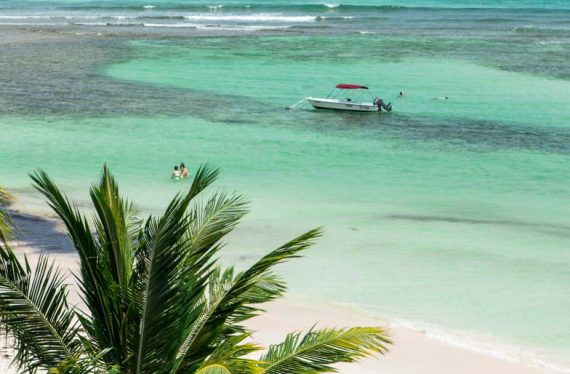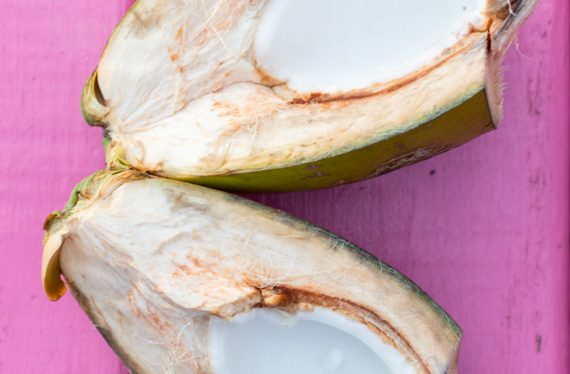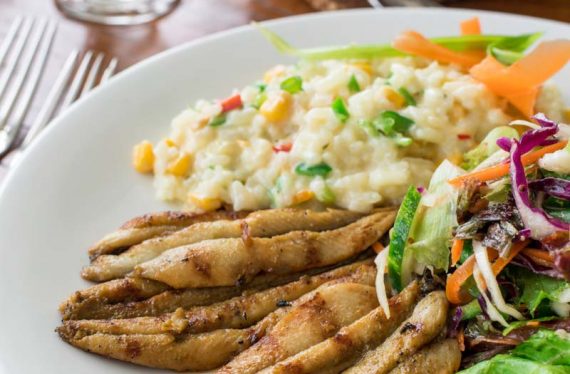On the Bright Side in Barbados
By Sunshine Flint
Photos by: Pamela Pasco
Barbados is classic Caribbean: pink-sand beaches, trade winds, turquoise seas—and most appealing of all, the friendly, relaxed lifestyle. Barbados has a rich colonial history and proud Bajan and British traditions, and it promotes its past and its present with events such as the Barbados International Film Festival in January and, in February, the Holetown Festival commemorating the island’s 17th-century settlement. Add to this mix the island’s sophisticated dining scene, from Speightstown to St. Lawrence Gap, and its many casual beach shacks, which share one basic tenet—they serve the freshest, most delicious seafood. And of course, the rum cocktails here are the finest in the Caribbean.
Rum Roots
For such a modestly sized place (just 21 miles long and 14 miles across), Barbados is packed with historic sites and has an excellent system of roads that crisscross the island. Barbados became a British colony in 1627, and sugarcane one of the main crops for the English settlers. The St. Nicholas Abbey and Rum Tour, in St. Peter Parish (Barbados is made up of 11 parishes), takes place at one of the oldest working plantations on the island. The 1658 Jacobean manor house is decorated with a mix of period furniture and unique objects such as a chandelier covered in pink, peach and coral shells; and the resident cats snoozing on antique chairs give it a cozy feel. The attached stables hold a small museum and rum-tasting room, but the real action is down by the steam mill (which replaced the original windmill in 1890) and rum distillery. Workers feed sugarcane into it by hand, and the resulting juice is boiled into syrup, which in turn goes through the copper still and into bourbon barrels to be aged into white and 5- or 12-year-old single-cask rum.
Not far away in St. Andrew Parish, you can stop at the Morgan Lewis Windmill, the last working sugar windmill on the island and one of only two left in the world. For an overview of Barbados’s colonial and slave history, the Arlington House Museum, in Speightstown, on the west coast, has three floors of interactive displays and exhibits housed in a 300-year-old “single” house (these types of houses are long and narrow, only the width of a single room). More colonial architecture and streetscapes have been preserved in the capital of Bridgetown, from the Parliament buildings to the 18th-century Barbados Garrison (which includes the George Washington House, where the first president stayed in 1751), and this proliferation of historic sites has landed the city on the UNESCO World Heritage List.
The Water
To the west, Barbados has miles of brilliant Caribbean coastline and fine beaches, hence its nickname, the Platinum Coast, while the east shore has wild dunes and Atlantic surf. Most of the island’s seaside resorts are found on the west and southern coasts, where the waters are gentler. One of the best ways to experience the beauty here is on a five-hour jaunt on Tiami Catamaran Cruises. You can swim with sea turtles and snorkel on a reef populated by needlefish, blue tangs and the occasional parrot fish. A full buffet lunch is followed by a lazy swim off a beach in Alleynes Bay.
For a more active adventure on the water, head to Silver Sands on the south coast and take a lesson from Brian Talma, a pro windsurfer. You can’t miss the gaily painted yellow boat placed as a marker near his equally Technicolored beach shop, deAction Surf Shop. Talma and his instructors give surfing and stand-up paddleboarding lessons on a beach with long, low gentle swells that make hopping up on your board a possibility, and also wind- and kitesurfing lessons at Silver Sands Beach.
The Nature
The most memorable view of Barbados’s verdant landscape is from the top of Cherry Tree Hill, where emerald vistas stretch out below as blue waves roll into the windswept eastern shore. This part of the island is known as the Scotland District, named for its resemblance to the Scottish Highlands. Cool off by sipping from a coconut bought from a coconut-jelly man (coconut flesh is called jelly in the Caribbean), who will slice off the top for a few dollars.
Barbados is known for its numerous gardens (it hosts the annual World Flower Show in June), both public and private. Consider spending a magical afternoon in Hunte’s Gardens, the vision of Englishman Anthony Hunte who a decade ago turned a limestone sinkhole into a botanical wonderland that is clearly a work of art and a labor of love. Royal palms stand sentinel as you descend the mossy stairs to tropical wonders below: purple water lilies, hot pink bromeliads, crimson torch ginger. Encroaching greenery covers the pathways and seating areas, and statuary is artfully placed. End your walk at Hunte’s house, where he welcomes guests personally with a generous sip of house rum or lemonade.
At the northernmost tip of the island, the Animal Flower Cave is home to pale, delicately colored sea anemones that live in the tide pools underground. The main opening to the coral rock cave is shaped exactly like a map of Barbados on its side. It’s worth wearing your bathing suit to the tour, because if conditions are calm, you can swim in the pools, and if not, you can still enjoy the tremendous views from the cliff walk topside.
The Food and Nightlife
With its haute cuisine and humble beach shacks, Barbados has a hot culinary scene. The Fish Pot in Clinketts is in an 18th-century stone fort with pale green wood shutters right on the water’s edge, one of the prettiest lunch spots on the island. Dine on crab cakes, grilled mahi-mahi and fresh avocado and beet salads on the porch or on the floating dock as you look down at crystal clear water and pink sand. For a romantic dinner out, choose a table for two on the open-air terrace of Café Luna near Miami Beach or the oceanside deck at Champers Wine Bar and Restaurant, on Accra Beach.
For an on-the-go lunch, you can pick up a cutter (sandwich) at Cuzz Café beach shack, on Pebbles Beach. There are only three choices: fish, fish with cheese, and cheese. Add mayonnaise, ketchup or Bajan hot-pepper sauce and you’re good to go. You’ll get a taste of Bajan cuisine at Fisherman’s Pub in Speightstown, where cou-cou (corn meal with fish), steamed plantains, oxtail stew, fried fish cakes, peas and rice, and jerk chicken or pork are served on the waterfront deck or taken to go.
The weekly party at Oistins Fish Fry on Friday nights draws locals and tourists alike for fresh flying fish, swordfish and mahi-mahi served at long trestle tables, while the stretch of road that runs along St. Lawrence Gap is lined with bars and restaurants, such as Cocktail Kitchen, that are justifiably busy every night of the week. For an elegant sundowner, head to The Cliff Beach Club, near Holetown. It has four airy levels decorated in white and turquoise, the lowest of which juts out over the translucent waters.


